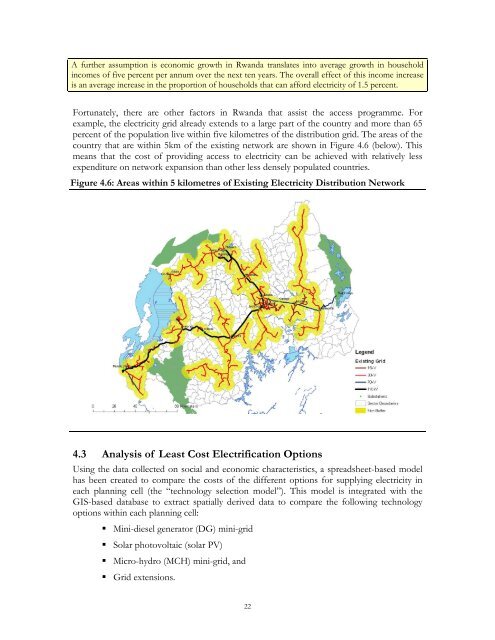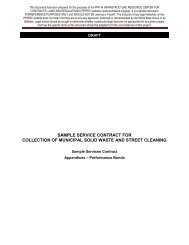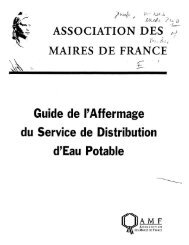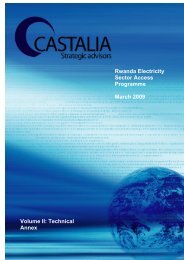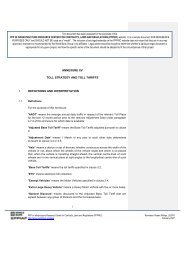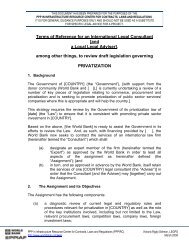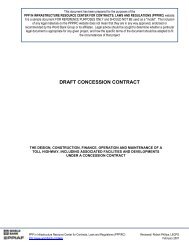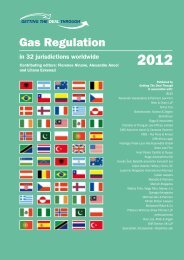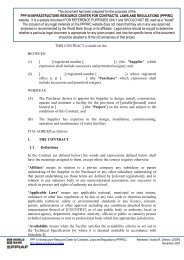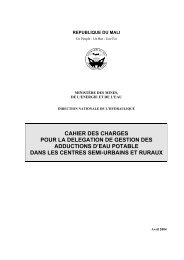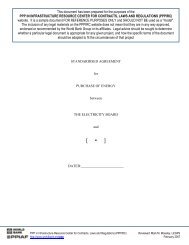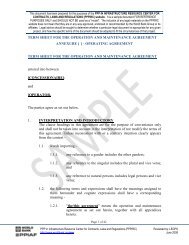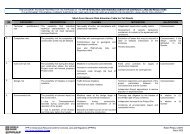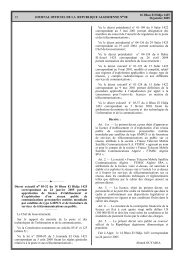Volume I: Investment Prospectus Rwanda Electricity Sector Access ...
Volume I: Investment Prospectus Rwanda Electricity Sector Access ...
Volume I: Investment Prospectus Rwanda Electricity Sector Access ...
- No tags were found...
You also want an ePaper? Increase the reach of your titles
YUMPU automatically turns print PDFs into web optimized ePapers that Google loves.
A further assumption is economic growth in <strong>Rwanda</strong> translates into average growth in householdincomes of five percent per annum over the next ten years. The overall effect of this income increaseis an average increase in the proportion of households that can afford electricity of 1.5 percent.Fortunately, there are other factors in <strong>Rwanda</strong> that assist the access programme. Forexample, the electricity grid already extends to a large part of the country and more than 65percent of the population live within five kilometres of the distribution grid. The areas of thecountry that are within 5km of the existing network are shown in Figure 4.6 (below). Thismeans that the cost of providing access to electricity can be achieved with relatively lessexpenditure on network expansion than other less densely populated countries.Figure 4.6: Areas within 5 kilometres of Existing <strong>Electricity</strong> Distribution Network4.3 Analysis of Least Cost Electrification OptionsUsing the data collected on social and economic characteristics, a spreadsheet-based modelhas been created to compare the costs of the different options for supplying electricity ineach planning cell (the “technology selection model”). This model is integrated with theGIS-based database to extract spatially derived data to compare the following technologyoptions within each planning cell:• Mini-diesel generator (DG) mini-grid• Solar photovoltaic (solar PV)• Micro-hydro (MCH) mini-grid, and• Grid extensions.22


